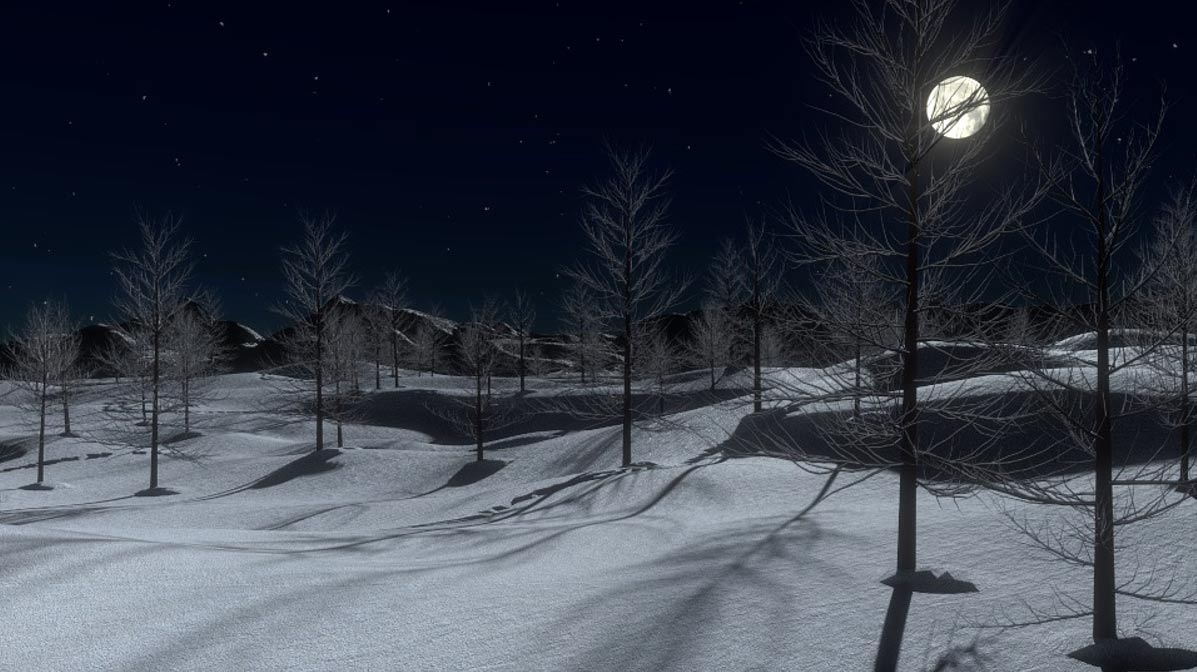Rare Holiday Full Moon Will Provide Special Christmas Light for First Time since 1977
A full-moon calculator indicates the moon was full on December 25, 1 AD, in the old Western calendar, and it will be full again this year, 2015 years later. This is the first time we have had a Christmas full moon since 1977, and it won’t happen again until 2034.
In the United States, the moon will be at its peak fullness at 6:11 a.m. Eastern Time. In Britain, where cloudy skies are expected, the moon will be at its fullest at 11:11 p.m.
The December full moon is called the Full Cold Moon because it is the last one of the year, says NASA, which has a spacecraft called the Lunar Reconnaissance Orbiter studying the moon.
“As we look at the moon on such an occasion [Christmas], it's worth remembering that the moon is more than just a celestial neighbor,” John Keller, NASA’s Goddard Space Flight Center in Greenbelt, Maryland, says on the NASA website. “The geologic history of the moon and Earth are intimately tied together such that the Earth would be a dramatically different planet without the moon.”

This NASA photo shows the Earth’s moon as it will appear on December 25, 2015, the first Christmas full moon since 1977.
The sun and the moon are considered symbols of Jesus’ dual nature. It is said Jesus in his life was fully god and fully man. So perhaps on the day traditionally assigned to celebrate the day of his birth, it is fitting that the moon would be fully visible in the sky.
In ancient cultures, the moon's waxing and waning have also made it a symbol of both birth/creation and death/destruction. The moon disappears from the sky for three days and then is reborn, like Jesus at Easter. “Death is not therefore not an extinction, but a temporal modification of the plan of life. For three nights the moon disappears from heaven, but on the fourth day it is reborn,” writes Mircea Eliade, as quoted in the J.S. Cirlot’s A Dictionary of Symbols. Some ancient cultures thought people went to the moon after death and then were reborn.
The Polynesian islanders of the Pacific Ocean saw the moon as a symbol of creation, represented by the creator goddess named Hina, while for the Aztecs of Mexico the moon was Mictecacuiatl, a destructive force which travelled through the night sky hunting out its victims. The Maori people of New Zealand also referred to the moon as the "man eater." For the Tartars of Central Asia, the moon, known as the Queen of Life and Death, was dualistic, representing both the forces of creation and destruction.

A painting of Santa and his reindeer-powered sleigh under a full moon from around 1870 (Wikimedia Commons)
While celestial objects know no holidays when it comes to their movements, the Bible says Jesus will come again and then the world will have no need of the sun or moon because he will be the light of the world. Revelation Chapter 21 says “And the city [the new Jerusalem] has no need of the sun or of the moon to shine on it, for the glory of God has illumined it, and its lamp is the Lamb.”
For the millions around the world that await the arrival of Santa Claus, they can take comfort in the fact that he will have plenty of Christmas light to guide him on his way this year.
Featured image: Full moon over a winter landscape (public domain)
By: Mark Miller

















